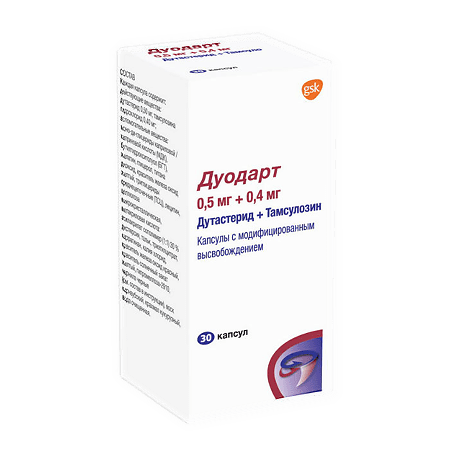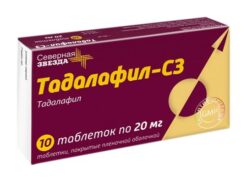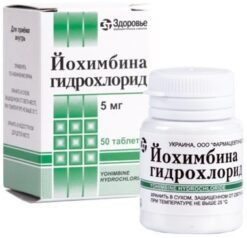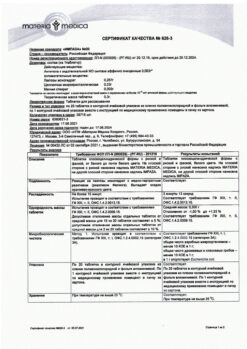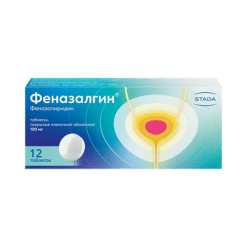No products in the cart.
Duodart, 0.5 mg+0.4 mg 30 pcs
€57.52 €49.85
Description
Duodart® is a combination drug of dutasteride and tamsulosin with a complementary mechanism of action.
Dutasteride is a dual 5α-reductase inhibitor and inhibits the activity of type 1 and type 2 5α-reductase isoenzymes, which are responsible for converting testosterone to 5α-dihydrotestosterone.
Dihydrotestosterone (DHT) is the main androgen responsible for glandular hyperplasia of the prostate. Dutasteride reduces DHT levels, decreases the size of the prostate gland, reduces symptoms, leads to improved urination, and decreases the risk of acute urinary retention and the need for surgical treatment.
The maximum effect of dutasteride on reducing DHT concentrations is dose-dependent and is seen 1 to 2 weeks after the start of treatment. After 1-2 weeks of dutasteride at a dose of 0.5 mg/day median serum DHT concentrations are reduced by 85-90%, respectively.
In patients with benign prostatic hyperplasia (BPH) receiving dutasteride at a dose of 0.5 mg/day, median levels of DHT decreased 94% during the first year and 93% during the second year of therapy; median serum testosterone levels increased by 19% during the first and second years of treatment.
This effect is due to a decrease in 5α-reductase levels and does not lead to any known adverse reactions.
Tamsulosin hydrochloride is a blocker of postsynaptic α1a-adrenoreceptors located in the smooth muscle of the prostate, bladder neck and prostatic urethra. Blockade of α1a-adrenoreceptors leads to decrease of tone of the smooth muscles of the prostate, bladder neck and prostatic part of the urethra and improves the outflow of urine.
At the same time both obstructive symptoms and irritative symptoms caused by increased tone of smooth muscles and detrusor hyperactivity in BPH are reduced.
Indications
Indications
– treatment and prevention of the progression of benign prostatic hyperplasia (reducing its size, reducing symptoms of the disease, improving urination, reducing the risk of acute urinary retention and the need for surgical treatment).
Pharmacological effect
Pharmacological effect
Duodart® is a combination drug of dutasteride and tamsulosin with a complementary mechanism of action.
Dutasteride is a dual 5α-reductase inhibitor that inhibits the activity of 5α-reductase isoenzymes types 1 and 2, which are responsible for the conversion of testosterone to 5α-dihydrotestosterone.
Dihydrotestosterone (DHT) is the main androgen responsible for prostate hyperplasia. Dutasteride reduces DHT levels, reduces the size of the prostate gland, reduces symptoms of the disease, leads to improved urination, and a reduced risk of acute urinary retention and the need for surgical treatment.
The maximum effect of dutasteride on reducing DHT concentrations is dose-dependent and is observed 1-2 weeks after the start of treatment. After 1–2 weeks of taking dutasteride at a dose of 0.5 mg/day, median serum DHT concentrations are reduced by 85–90%, respectively.
In patients with benign prostatic hyperplasia (BPH), when taking dutasteride at a dose of 0.5 mg/day, the average reduction in DHT levels was 94% during the first year and 93% during the second year of therapy; mean serum testosterone levels increased by 19% during the first and second years of treatment.
This effect is due to a decrease in the level of 5α-reductase and does not lead to the development of any known adverse reactions.
Tamsulosin hydrochloride is a blocker of postsynaptic α1a-adrenergic receptors located in the smooth muscles of the prostate gland, bladder neck and prostatic urethra. Blockade of α1a-adrenergic receptors leads to a decrease in the tone of the smooth muscles of the prostate gland, bladder neck and prostatic urethra and improves urine outflow.
At the same time, both obstructive symptoms and irritative symptoms due to increased smooth muscle tone and detrusor hyperactivity in BPH are reduced.
Special instructions
Special instructions
Dutasteride is absorbed through the skin, so women and children should avoid contact with damaged capsules. In case of contact with damaged capsules, immediately wash the affected area of skin with soap and water.
Concomitant use of tamsulosin and strong inhibitors of CYP3A4 (ketoconazole), CYP2D6 (paroxetine), as well as their weaker inhibitors, leads to increased tamsulosin exposure. Therefore, the use of tamsulosin in combination with strong CYP3A4 inhibitors is not recommended; the combination of CYP2D6 inhibitors and tamsulosin should be prescribed with caution.
Since the half-life of dutasteride is 3-5 weeks and is metabolized primarily in the liver, Duodart® should be used with caution in patients with liver disease.
Combination therapy with tamsulosin hydrochloride and the development of heart failure
In two 4-year clinical studies, the incidence of heart failure (a composite term of events observed, mainly heart failure and congestive heart failure) was higher in patients receiving the combination of dutasteride and an alpha1-blocker, mainly tamsulosin hydrochloride, than in patients not receiving the combination treatment. In two 4-year clinical studies, the incidence of heart failure remained low (≤1%) and varied between studies. But in general, there were no differences in the incidence of side effects from the cardiovascular system. No causal relationship has been established between treatment with dutasteride (alone or in combination with an alpha1-blocker) and heart failure.
Impact on PSA and prostate cancer detection
In patients with BPH, it is necessary to conduct a digital rectal examination and other methods of examining the prostate gland before starting treatment with Duodart® and periodically repeat these studies during treatment to exclude the development of prostate cancer.
Determination of serum PSA concentrations is an important component of the screening process to detect prostate cancer.
After 6 months of therapy, dutasteride reduces serum PSA levels in patients with BPH by approximately 50%.
Patients taking Duodart® should have a new baseline PSA level determined after 6 months of therapy.
Any sustained increase in PSA levels relative to the nadir during treatment with Duodart may indicate the development of prostate cancer (particularly high-grade Gleason prostate cancer) or non-compliance with Duodart and should be carefully assessed, even if these PSA levels remain within the normal range in patients not taking 5α-reductase inhibitors.
Total PSA levels return to baseline within 6 months after discontinuation of dutasteride.
The ratio of free PSA to total remains constant even during dutasteride therapy. When this ratio is expressed in proportions to detect prostate cancer in men receiving dutasteride, no correction of this value is required.
Risk of developing breast cancer
In clinical studies during the treatment of BPH, 2 cases of breast cancer were identified in patients using dutasteride. The first case developed 10 weeks after the start of therapy, the second – after 11 months; There was also 1 case of breast cancer in a patient in the placebo group. The relationship between long-term use of dutasteride and the risk of developing breast cancer is unknown.
Prostate cancer
In a 4-year clinical study, 1,517 of more than 8,000 men with a preliminary negative biopsy and a PSA level of 2.5-10 ng/ml were diagnosed with prostate cancer. There was a higher incidence of cancer in patients in the dutasteride group (n=29, 0.9%) compared to the placebo group (n=19, 0.6%). There was no interaction between dutasteride use and prostate cancer grade. Men taking dutasteride should be regularly screened for their risk of prostate cancer, including a PSA test.
Arterial hypotension
As with any alpha1-blocker, orthostatic hypotension may occur when using tamsulosin hydrochloride, which in rare cases can lead to fainting.
Patients starting treatment with Duodart should be warned to sit or lie down at the first sign of orthostatic hypotension (dizziness) until the dizziness resolves.
To avoid the development of symptomatic hypotension, caution should be exercised when co-prescribing alpha1-blockers and PDE5 inhibitors, because These drugs belong to the group of vasodilators and can lead to a decrease in blood pressure.
Floppy iris syndrome
Intraoperative atonic iris syndrome (IFIS, a type of small pupil syndrome) has been observed during cataract surgery in some patients receiving alpha1-blockers, including tamsulosin hydrochloride. Atonic iris syndrome can lead to an increase in the number of complications during operations.
During the preoperative examination, the ophthalmic surgeon should clarify whether the patient is taking a combination of dutasteride with tamsulosin hydrochloride in order to prepare for surgery and take adequate measures if iris atony occurs intraoperatively.
Discontinuation of tamsulosin hydrochloride 1 to 2 weeks before cataract surgery is considered beneficial, but the benefit and length of time to discontinue the drug before cataract surgery have not been established.
Liver dysfunction
Currently, there are no data on the use of Duodart® in patients with impaired liver function. Because Dutasteride undergoes intensive metabolism, and its T1/2 is 3-5 weeks; caution must be exercised when treating patients with impaired liver function with Duodart®.
Impact on the ability to drive vehicles and operate machinery
There have been no studies examining the effects on driving and operating machinery.
Patients should be informed about the possibility of symptoms associated with orthostatic hypotension, such as dizziness. Care must be taken when operating vehicles or potentially dangerous machinery.
Active ingredient
Active ingredient
Dutasteride, Tamsulosin
Composition
Composition
active ingredient:
dutasteride,
tamsulosin hydrochloride
1 capsule contains dutasteride 0.5 mg and tamsulosin hydrochloride 0.4 mg;
excipients:
caprylic acid monodiglycerides,
butylated hydroxytoluene (E 321),
gelatin, glycerin,
titanium dioxide (E171),
iron oxide yellow (E172),
medium chain triglycerides and lecithin;
microcrystalline cellulose,
methacrylate copolymer dispersion,
talc,
triethyl citrate;
hard capsule shell:
carrageenan (E 407),
potassium chloride,
titanium dioxide (E 171),
FD&C Yellow 6 (E 110),
hypromellose,
carnauba wax,
corn starch,
iron oxide red (E 172),
SW-9008 Black Ink (shellac, propylene glycol, black iron oxide (E172), potassium hydroxide).
Contraindications
Contraindications
– women;
– children and adolescents under 18 years of age;
– severe liver failure;
– history of attacks of orthostatic hypotension;
– planned cataract surgery;
– known hypersensitivity to tamsulosin hydrochloride, dutasteride, other 5α-reductase inhibitors or any other ingredient of the drug.
Side Effects
Side Effects
Adverse events caused by the use of tamsulosin hydrochloride in combination with dutasteride
Very rarely (
Sexual disorders are associated with the use of the dutasteride component and may persist after discontinuation of therapy.
Adverse events associated with the use of dutasteride as monotherapy
Rarely (≥1/10,000 and
Very rarely (
Adverse events associated with the use of tamsulosin hydrochloride as monotherapy
Often (≥1/100 and
Uncommon (≥1/1000 and
Rarely (≥1/10,000 and
Very rarely (
Post-marketing studies
Intraoperative atonic iris syndrome (IFIS, a type of small pupil syndrome) has been observed during cataract surgery in some patients receiving alpha1-blockers, including tamsulosin hydrochloride.
Cases of atrial fibrillation, arrhythmia, tachycardia and shortness of breath have been identified while taking tamsulosin. The frequency of adverse reactions and the relationship with tamsulosin have not been established.
Interaction
Interaction
No drug interaction studies have been conducted for the combination of dutasteride with tamsulosin hydrochloride. The data below reflects the information available on the individual components.
Dutasteride
Dutasteride is metabolized by the CYP3A4 isoenzyme of the cytochrome P450 enzyme system. In the presence of CYP3A4 inhibitors, dutasteride blood concentrations may increase.
With simultaneous use of dutasteride with the CYP3A4 inhibitors verapamil and diltiazem, a decrease in the clearance of dutasteride was observed by 37% and 44%, respectively. However, amlodipine, another calcium channel blocker, does not reduce the clearance of dutasteride.
The decrease in clearance of dutasteride and the subsequent increase in its concentration in the blood with simultaneous use of this drug and CYP3A4 inhibitors is not significant due to the wide range of safety limits of this drug, so there is no need to reduce its dose.
In vitro, dutasteride is not metabolized by the following isoenzymes of the human cytochrome P450 system: CYP1A2, CYP2A6, CYP2E1, CYP2C8, CYP2C9, CYP2C19, CYP2B6 and CYP2D6.
Dutasteride does not inhibit in vitro enzymes of the human cytochrome P450 system involved in the metabolism of drugs.
Dutasteride does not displace warfarin, acenocoumarol, phenprocoumon, diazepam and phenytoin from their binding sites to plasma proteins, and these drugs, in turn, do not displace dutasteride.
There was no effect on the pharmacokinetics and pharmacodynamics of the combined use of dutasteride in combination with tamsulosin, terazosin, warfarin, digoxin and cholisteramine.
When dutasteride is used simultaneously with lipid-lowering drugs, ACE inhibitors, beta-blockers, calcium channel blockers, corticosteroids, diuretics, NSAIDs, PDE5 inhibitors and quinolone antibiotics, no significant drug interactions are observed.
Tamsulosin hydrochloride
There is a theoretical risk of increased hypotensive effect when using tamsulosin hydrochloride in combination with drugs that can lower blood pressure, including anesthetics, alpha1-blockers and PDE5 inhibitors. Duodart® should not be used in combination with other alpha1-blockers.
The combined use of tamsulosin and ketoconazole (a strong inhibitor of CYP3A4) leads to an increase in Cmax and AUC of tamsulosin hydrochloride to 2.2 and 2.8, respectively. Co-administration of tamsulosin and paroxetine (a strong inhibitor of CYP2D6) leads to an increase in Cmax and AUC of tamsulosin hydrochloride to 1.3 and 1.6, respectively. Concomitant use of CYP2D6 and CYP3A4 inhibitors with tamsulosin has not been studied, but this combination is expected to significantly increase tamsulosin exposure.
Concomitant use of tamsulosin hydrochloride (0.4 mg) and cimetidine (400 mg every 6 hours) for 6 days led to a decrease in clearance (by 26%) and an increase in the AUC of tamsulosin hydrochloride (by 44%). Caution is required when using Duodart ® and cimetidine together.
Comprehensive drug interaction studies between tamsulosin hydrochloride and warfarin have not been conducted. Caution should be exercised when using warfarin and tamsulosin hydrochloride simultaneously.
In three studies in which tamsulosin hydrochloride (0.4 mg for 7 days, then 0.8 mg for the next 7 days) was taken with atenolol, enalapril or nifedipine for 3 months, no interaction was observed, therefore, no dose adjustment is necessary when using these drugs with Duodart®.
The simultaneous use of tamsulosin hydrochloride (0.4 mg/day for 2 days, then 0.8 mg/day for 5-8 days) and a single intravenous injection of theophylline (5 mg/kg) did not lead to changes in the pharmacokinetics of theophylline, therefore, no dose adjustment is required.
Concomitant use of tamsulosin hydrochloride (0.8 mg/day) and a single IV dose of furosemide (20 mg) resulted in a decrease of 11 to 12% in Cmax and AUC of tamsulosin hydrochloride, but these changes are expected to be clinically insignificant and no dose adjustment will be required.
Combined use of dutasteride and tamsulosin hydrochloride
In two 4-year clinical studies, the incidence of heart failure (a composite term of events observed, mainly heart failure and congestive heart failure) was higher in patients receiving the combination of dutasteride and an alpha1-blocker, mainly tamsulosin hydrochloride, than in patients not receiving the combination treatment. In two 4-year clinical studies, the incidence of heart failure remained low (≤1%) and varied between studies. But in general, there were no differences in the incidence of side effects from the cardiovascular system. No causal relationship has been established between treatment with dutasteride (alone or in combination with an alpha1-blocker) and heart failure.
Overdose
Overdose
There is no data regarding overdose when taking a combination of dutasteride with tamsulosin hydrochloride. The data below reflects the information available on the individual components.
Dutasteride
Symptoms: when using dutasteride at a dose of up to 40 mg/day (80 times higher than the therapeutic dose) for 7 days, no adverse events were observed. In clinical studies, when prescribing 5 mg/day for 6 months, no adverse reactions other than those listed for the therapeutic dose (0.5 mg/day) were observed.
Treatment: there is no specific antidote for dutasteride, so if an overdose is suspected, it is sufficient to carry out symptomatic and supportive treatment.
Tamsulosin hydrochloride
Symptoms: with an overdose of tamsulosin hydrochloride, acute hypotension may develop.
Treatment: symptomatic therapy. Blood pressure can recover when a person assumes a horizontal position. If there is no effect, you can use drugs that increase blood volume and, if necessary, vasoconstrictors. It is necessary to monitor kidney function. It is unlikely that dialysis will be effective because… tamsulosin hydrochloride is bound to plasma proteins by 94-99%.
Manufacturer
Manufacturer
Catalent Germani Schorndorf GmbH, Germany
Additional information
| Manufacturer | Catalent Germani Schorndorf GmbH, Germany |
|---|---|
| Medication form | modified-release capsules |
| Brand | Catalent Germani Schorndorf GmbH |
Related products
Buy Duodart, 0.5 mg+0.4 mg 30 pcs with delivery to USA, UK, Europe and over 120 other countries.

